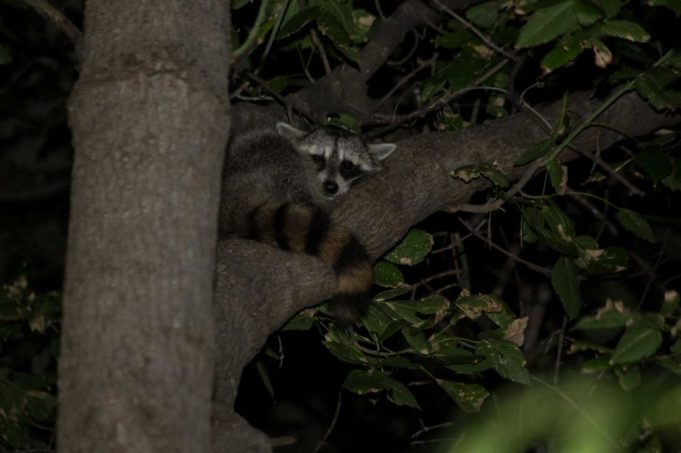An unknown person or persons in a neighborhood near TCU has had enough of the local wildlife and taken matters into his or her own hands, much to the dismay of some of the neighbors.
There has been at least one reported sighting of an animal with a leg caught in a steel trap near a creek and public bike path in Tanglewood, a posh neighborhood of homes built in the 1950s and ’60s west of Amon G. Carter Stadium.
A resident wishing to remain anonymous for this story said she saw the raccoon in a tree on public land across from the dozens of private homes that make up Tanglewood.
“I heard clanking and saw her with a full leg trap,” the resident wrote in an online forum last month. “A chain was dangling from [the trap] about halfway up the tree.”
Some Tanglewood residents are now voicing concerns that children or pets could accidentally find their legs in one of the traps.
Another raccoon was photographed in James Devine’s backyard with a bloody stump where its front left leg used to be, possibly from a self-inflicted amputation to free itself from a trap. Residents have rallied to the defense of the backyard bandits that frequent the neighborhood. Even though raccoons are known to dig through trash or eat food intended for pets or birds, many Tanglewood residents have decried the actions of the mysterious trappers.
Devine brought the issue to light when he posted a comment in the online neighborhood community Nextdoor.
“Such traps are indiscriminate,” Devine wrote. “Their use within municipal areas falls under general cruelty [under] animal laws.”
The trap that the anonymous resident saw matches the description of dog-proof traps that are specifically designed for raccoons. The traps look like a small steel barrel, and bait is placed inside. When an animal reaches in to grab the food, the trap springs shut on the animal’s paw. The traps are designed to be chained to the ground to prevent the animal from escaping until it can be disposed of.
While these traps are designed to avoid accidentally injuring a dog or child, they can maim raccoons and other critters. According to Fort Worth codes, traps that latch onto an animal’s legs are prohibited within city limits for any use other than rat control.
City Spokesperson Diane Covey said no traps or evidence have been found. Meanwhile, police cannot search private property and are relying on residents to call 911 if any traps are seen.
Several residents in Tanglewood have reached out to the Humane Society of North Texas but with little success. One resident told me that she has left several unreturned messages, while another resident said there was “no interest in helping.”
Sandy Shelby, Humane Society executive director, said she has not heard of any reports of traps in Tanglewood.
“Fort Worth Animal Care and Control usually handles wildlife complaints,” Shelby said in an email. “And by ‘handle,’ I mean ‘trap and euthanize.’ The person setting the traps may be a pest control company.”
Shelby vowed to send one of her investigators to “check on this immediately” if the neighbors supply her with information about sightings.
This is not the first time that wild animals have been preyed upon in and around Fort Worth. The Arlington Police Department received a call on August 25 that has led to an investigation of multiple dead cats with at least one suspect. According to the department’s spokesperson, Vanessa Harrison, a bowl of cat food left in front of an unoccupied building on Main Street was found during the ensuing investigation and is currently being tested for poison.
Feral cats have long been a contentious issue for Fort Worth. In 2011, the Fort Worth Weekly reported on a meeting to discuss the adoption of a trap-neuter-release policy where several attendees were audibly in favor of killing the cats. Within a couple of months, a group of about 20 feral cats that had inhabited Trinity Park for a decade disappeared. Ro Williams and other volunteers who had routinely fed the feral cats in Trinity Park raised a $5,000 reward for information leading to the arrest of the killers. None were found.
Even after losing an entire community of cats, Williams was still shocked by the reports in Tanglewood.
“I’ve had nothing happen to that degree,” Williams said about the steel traps. “That’s very sad.”












